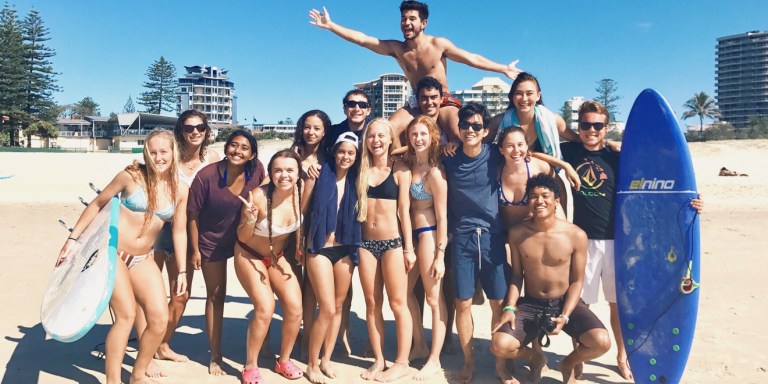With 10 quarter-length locations to choose from, 50 percent of Stanford undergraduates elect to study abroad through the Bing Overseas Studies Program (BOSP). Students’ reactions to returning to campus varied according to the BOSP programs in which they participated, but many who studied abroad report that they returned to campus refreshed and with new perspectives on Stanford.

Chloe Thai ’19, who spent last quarter in Florence, appreciated the relaxation that accompanied her study abroad experience.
“I feel like a lot of people in Florence went to experience a slower pace of life and to get away from the hectic-ness of Stanford,” Thai said.
Leaving campus allowed Thai to explore a new city and take classes outside of those required for her product design major. As for how she felt about returning to campus, Thai believed that her time away from Stanford has helped her to become more focused on her academics.
“I think it has just motivated me to work harder now being back, knowing that I’ve had a quarter off to have fun, explore, find myself and travel,” Thai explained.
For Victoria White ’18, Stanford’s campus feels much smaller following her autumn term at Oxford. While abroad, White frequently took advantage of Europe’s inexpensive transportation system to explore the continent. Now back on campus, White has had to readjust her mindset.
“My world is very much bounded by Campus Drive,” White said.“Stanford is a place where everything you need is in this one mile radius circle.”
Unlike Stanford’s Florence program, where students often elect to take courses beyond the scope of their prescribed academic paths, other BOSP programs are not as flexible. For example, BOSP’s program in Australian Coastal Studies is structured around a predetermined class schedule.
As a result, for earth systems major Jessa Clark ’19, returning from the Australia program has given her a newfound appreciation for her ability to shape her own schedule on campus. The Australia program’s emphasis on environmental studies also presented Clark the chance to explore subjects related to her field of study at Stanford.
“I am really interested in ecology and the environment, and I really wanted to get some field work experience and also just go somewhere where I could be outside a lot more than I am normally on campus,” Clark said.
Many choose to study abroad in order to explore different types of university experiences. At Oxford, for example, each Stanford student in the program is placed in one of three Oxford colleges and is able to join the college’s clubs and sports teams. Before arriving at Oxford, students also select their own tutorial topics, which they intensively study under the guidance of tutors.
While applying to Oxford, White was initially nervous about the tutorial system’s reputation for academic rigor. Contrary to her fears, however, White said that her schoolwork was engaging but not overwhelming.
“Even at Oxford, where the academics were extremely rewarding, it was incredibly refreshing to not have my focus be on academics so much as on personal growth,” she said.
As a result of her emphasis on self-exploration while at Oxford, White was able to develop new perspectives on her time at Stanford.
“I think it made me realize how much I love new experiences and how much I had been craving the chance to explore while I was at Stanford,” White said.
Clark’s time in Australia has similarly changed her experience on campus.
“I’m so excited to be back,” Clark said. “It’s kind of like freshman year again, where I’m like, ‘Wow, this is such a great place, and there are so many cool people.'”
The Daily was not able to reach BOSP for comment.
Contact Gabriela Romero at gromero2 ‘at’ stanford.edu
